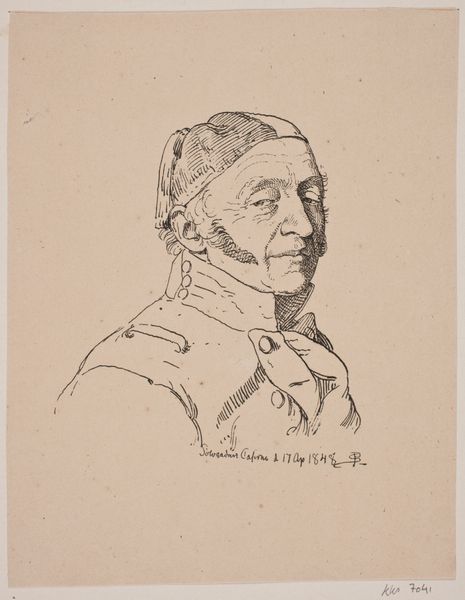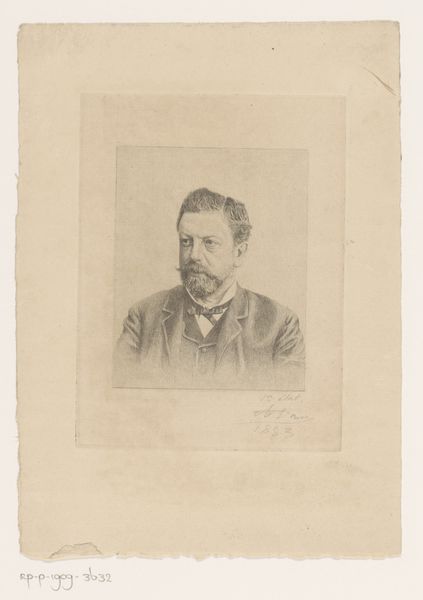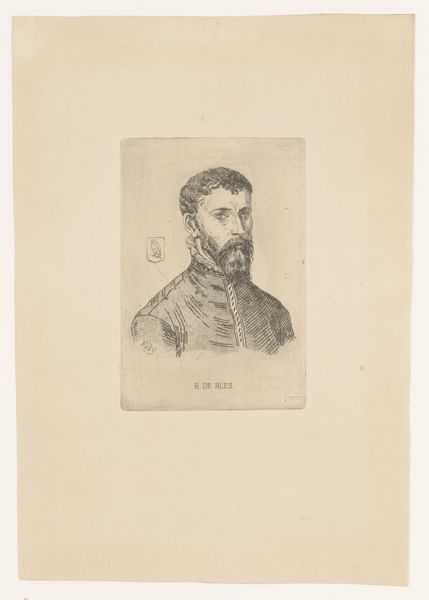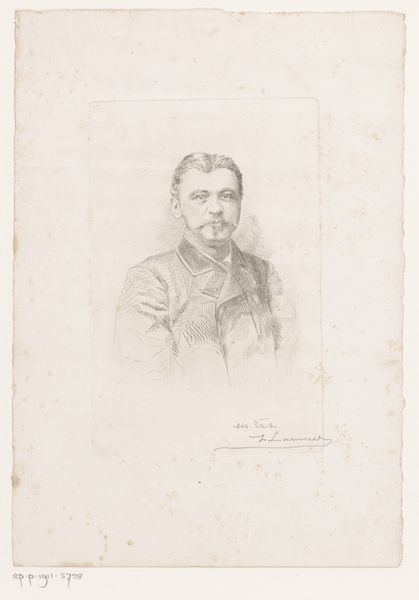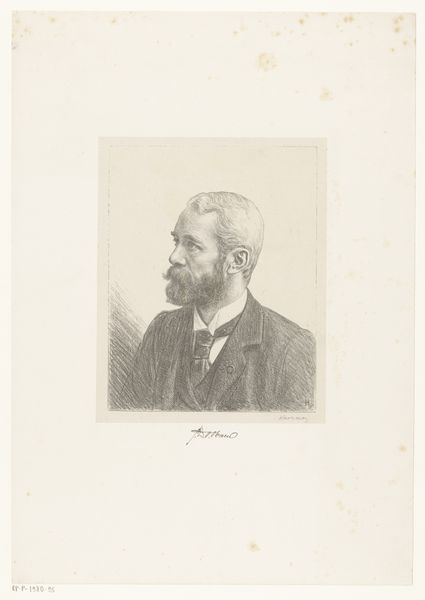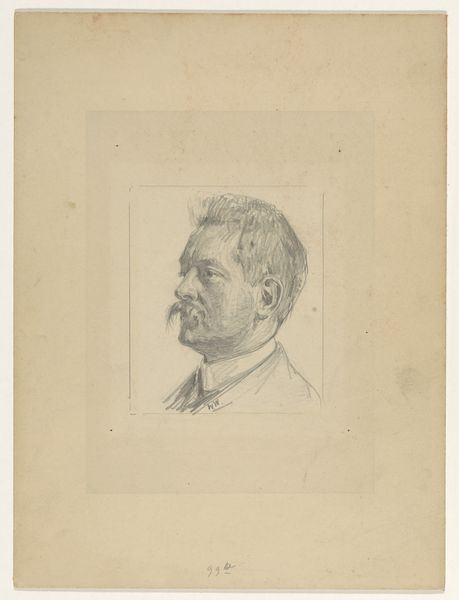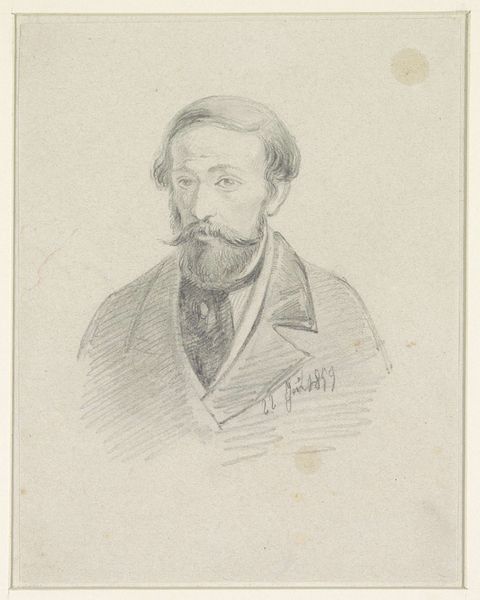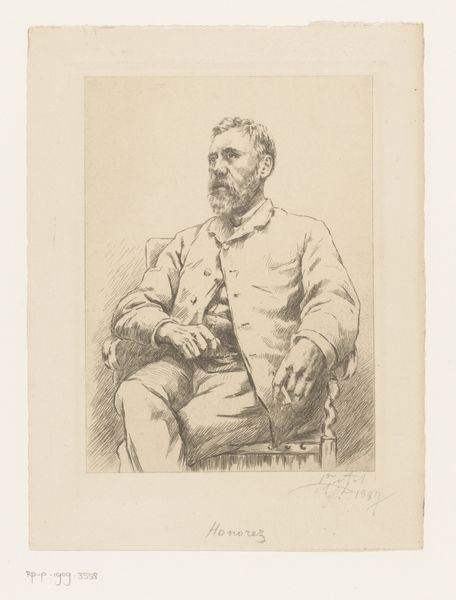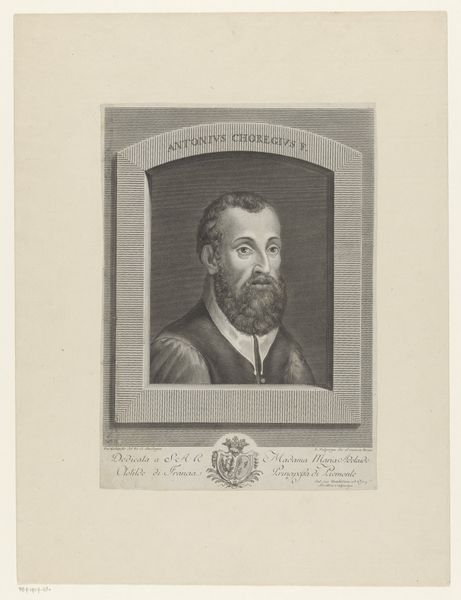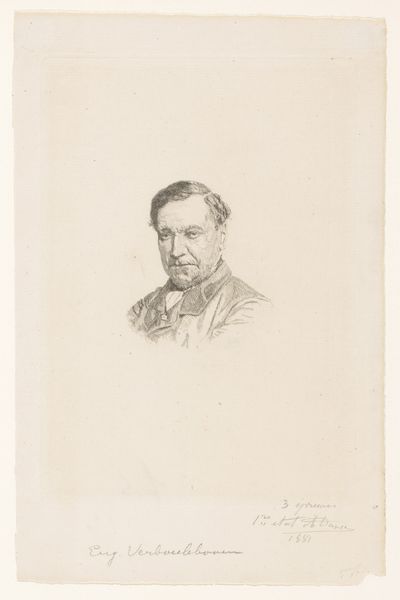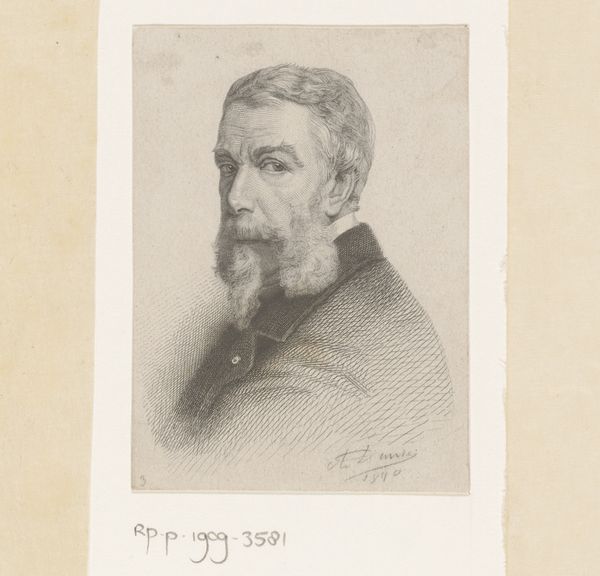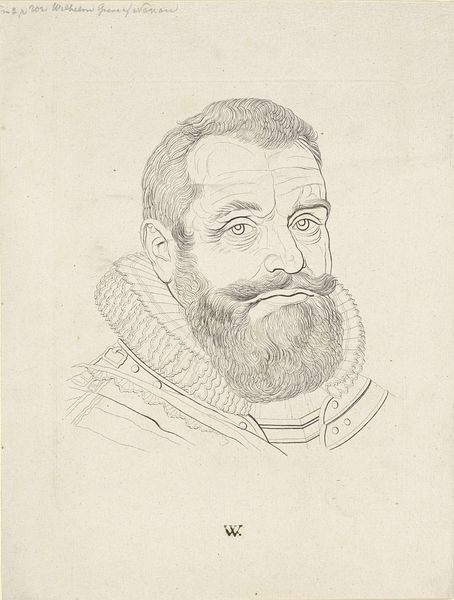
drawing, print, paper, pencil, chalk, charcoal
#
portrait
#
drawing
# print
#
paper
#
11_renaissance
#
pencil drawing
#
pencil
#
chalk
#
portrait drawing
#
charcoal
Dimensions: 234 × 190 mm
Copyright: Public Domain
Curator: Here we have a pencil, chalk, and charcoal drawing by Anthony van Dyck titled "Theodoor van Loon." It's currently undated. What are your first thoughts? Editor: Intimate, even vulnerable. There's something quite personal about it, almost as if we're peering into a private moment with the sitter. The lightness of the lines and the selective use of color create a real sense of immediacy. Curator: That intimacy comes through Van Dyck's masterful technique. This drawing likely served as a study for a larger painted portrait, a preparatory piece to capture Theodoor van Loon's likeness and character before committing to a more formal representation. Van Dyck, as a leading portraitist, had a workshop dedicated to these prints. Editor: It is interesting to view a sketch such as this in that context. The idea of an established workshop producing portraits reflects so much about artistic production in that era. Was there space for personal expression, or was the pressure for production too great? I also see Van Loon as more than a sitter—he’s part of a larger cultural network of artists, patrons, and the social elite. Curator: Indeed. And portraiture itself played a vital role in constructing social identity and power during this time. A portrait legitimized your existence within the upper echelons of society. The flamboyant ruff that Mr. Van Loon is sporting, or even the mere fact that he could afford a painter such as Van Dyck, signal certain claims to status. Editor: I am sure! And I am now noticing this curious choice to emphasize the ruff but not the other costume details. He allows those lines to flow lightly across the page. It directs the viewer's gaze towards the head and, thus, Van Loon’s humanity rather than allowing for a fully posed presentation of nobility and high-class status. Curator: Precisely. Van Dyck captured a psychological complexity, providing insight into Theodoor van Loon as an individual but, in so doing, simultaneously showcasing the social currency of representation. Editor: Looking at this piece has allowed us to pull back the curtain, revealing how power, identity, and artistry were intricately intertwined during that era. I'll certainly see Van Dyck's work differently now. Curator: And hopefully, we’ve provided listeners with new ways of thinking about portraiture’s place in social and political contexts of the time.
Comments
No comments
Be the first to comment and join the conversation on the ultimate creative platform.
